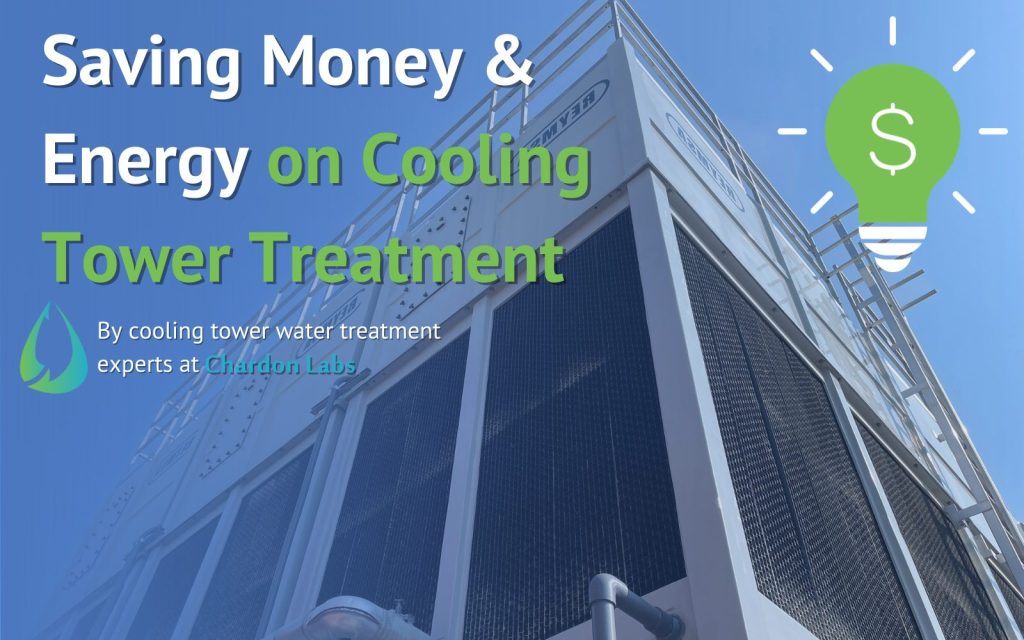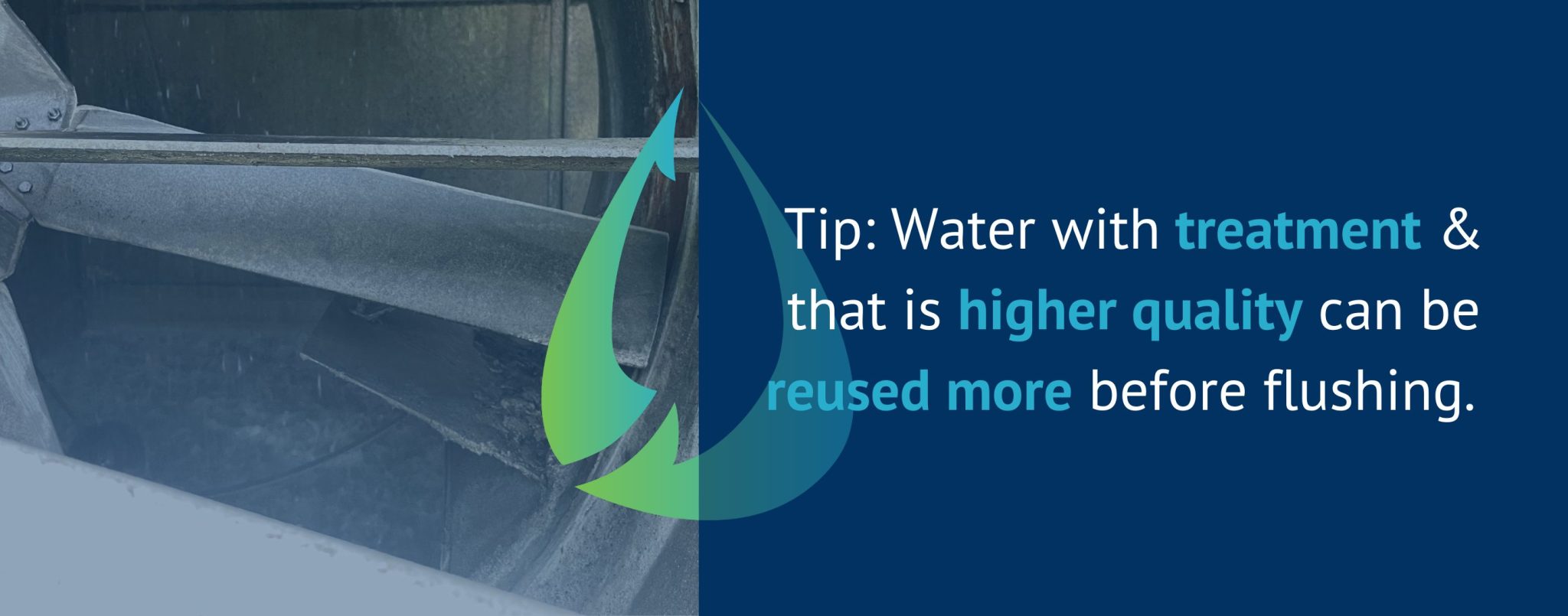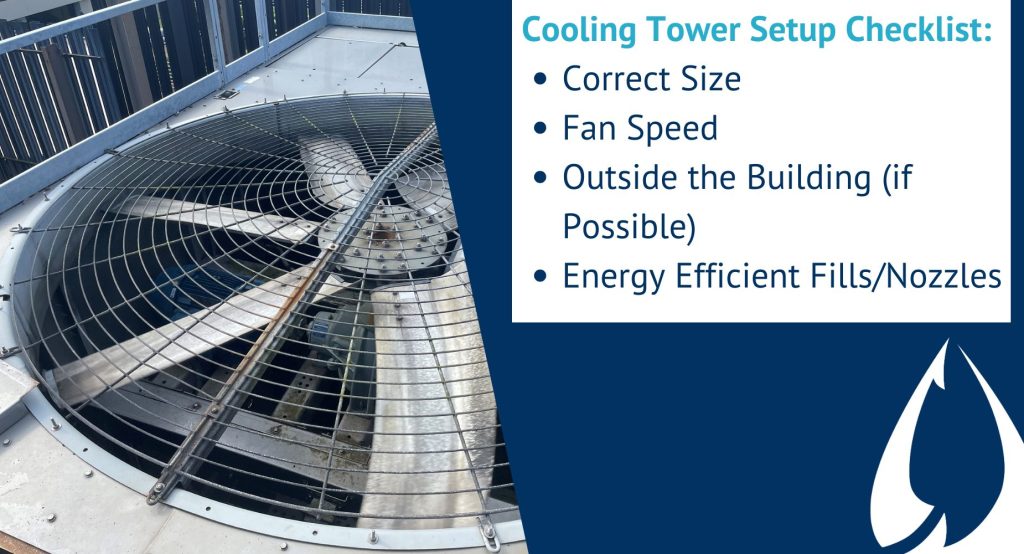
September 15, 2023
When a cooling tower blowdown occurs, water is lost in the evaporation process. This can also affect the pH of the water. This is because when the water evaporates it leaves behind minerals. When there is a change in minerals there is also a change in the water’s conductivity. It is recommended to install a conductivity controller to automate the process of regulating blowdown. This will measure the conductivity, which will measure the mineral content as well. Importantly, it will only blowdown when necessary based on the present conditions of the water.
These are the main points regarding water savings in cooling towers. Here are additional tips for water savings from our previous article.

Cooling tower water can be reused multiple times, this is also referred to as cycles of concentration. The amount of cycles of concentration varies depending on factors such as the quality of your source water. High pH/hard water cannot be cycled as many times as low pH/soft water. Every time water is cycled through a system, its mineral and biological content will grow. It is important to monitor your system to make sure your cycles of concentration are set properly and not causing problems.

Chemical water treatment can help save on energy savings, especially in regards to the tower’s ability to transfer heat. If the metal surface is corroded, scaled, or has biofilm, it will be much less efficient.
Another important factor of energy savings is the mechanical structure of the tower. It is important to size cooling towers correctly as they are not a one-size-fits-all system. It is worth noting that larger towers can have colder water, which can drastically decrease the cost for both the tower and the closed loop the cold water is entering. Additionally, the component that requires the most energy is the fan, ideally, it only goes as fast as needed. Also, for fan efficiency, if the tower can be located outside and be equipped with a propeller it will cost less than an inside one with a squirrel cage blower fan. Additionally, some fills and nozzles are more energy-efficient than others. These should be compared, as well as the overall tower. Since it is a system, it is important to make sure everything works together. Older towers tend to be less efficient as the tower and its many components are not equipped with recent energy-efficient technologies.
One of the major ways to save on expenses related to cooling towers is to have a quality water treatment plan. If you do not have preventative service or have mediocre service your cooling tower will have major problems. Some of these problems include:
Regularly serviced chemical water treatment costs less than these problems will. Water treatment technicians can prevent and react to problems in your cooling tower. They can test and monitor the systems to keep your facility operational. In addition to this, water treatment experts can execute cost-saving strategies around keeping water and energy usage low. For expert advice on cooling tower efficiency and water treatment contact us here.